Abstract
We investigated a procedure to increase the selection of larger, more delayed reinforcers (i.e., more advantageous in the long run) over smaller immediate reinforcers, in an effort to increase a key aspect of self-control in children. Six preschoolers, including one comparison subject, identified by their teachers as impulsive, were preassessed and found consistently to select smaller immediate reinforcers over larger, more delayed ones. The teaching procedure consisted of gradually increasing the durations of the delay interval over many sessions. The follow-up assessments showed that 5 of these children increased the proportion of their choices of the delayed reinforcers. Before training, indifference points ranged from 1.7 to 51.7 s; following treatment, points rose to a range of 37.5 to at least 90 s, with 3 children preferring the larger reinforcer at all delay intervals tested. The results demonstrated the feasibility of teaching young children to make choices more advantageous to them in the long run.
Full text
PDF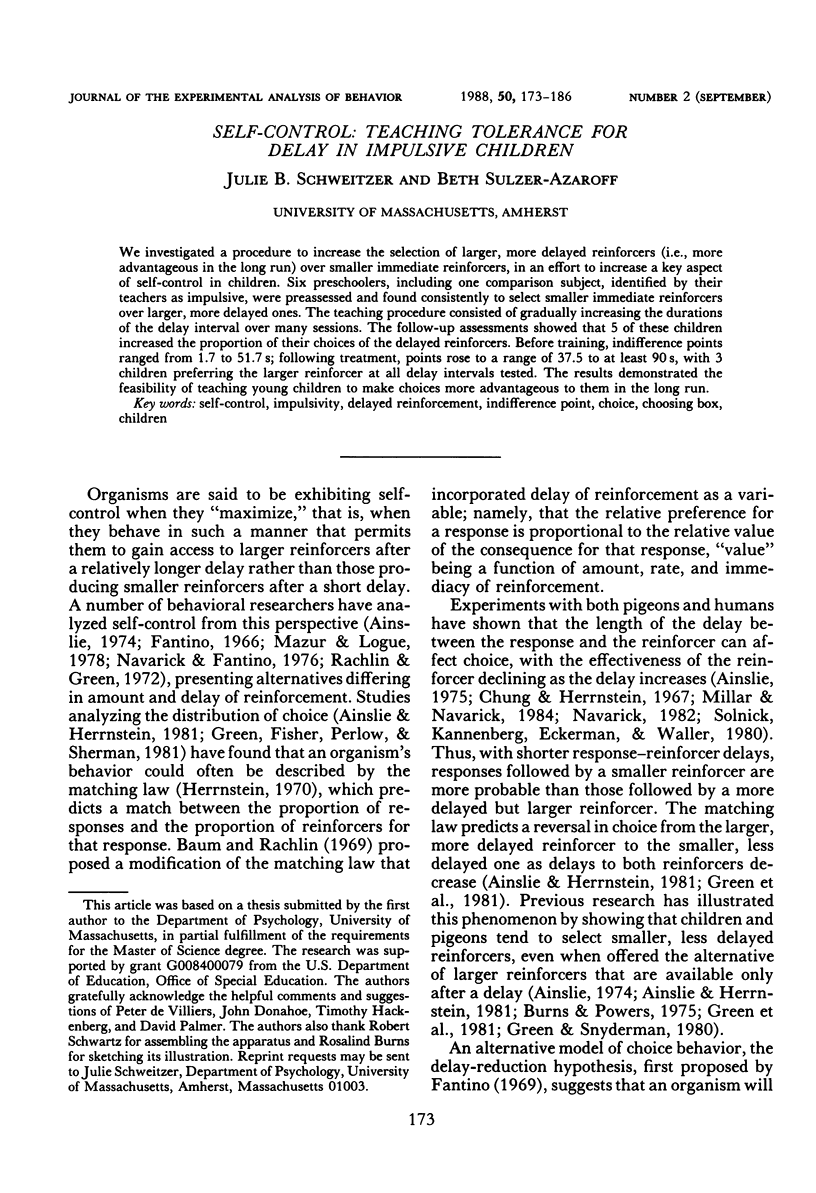
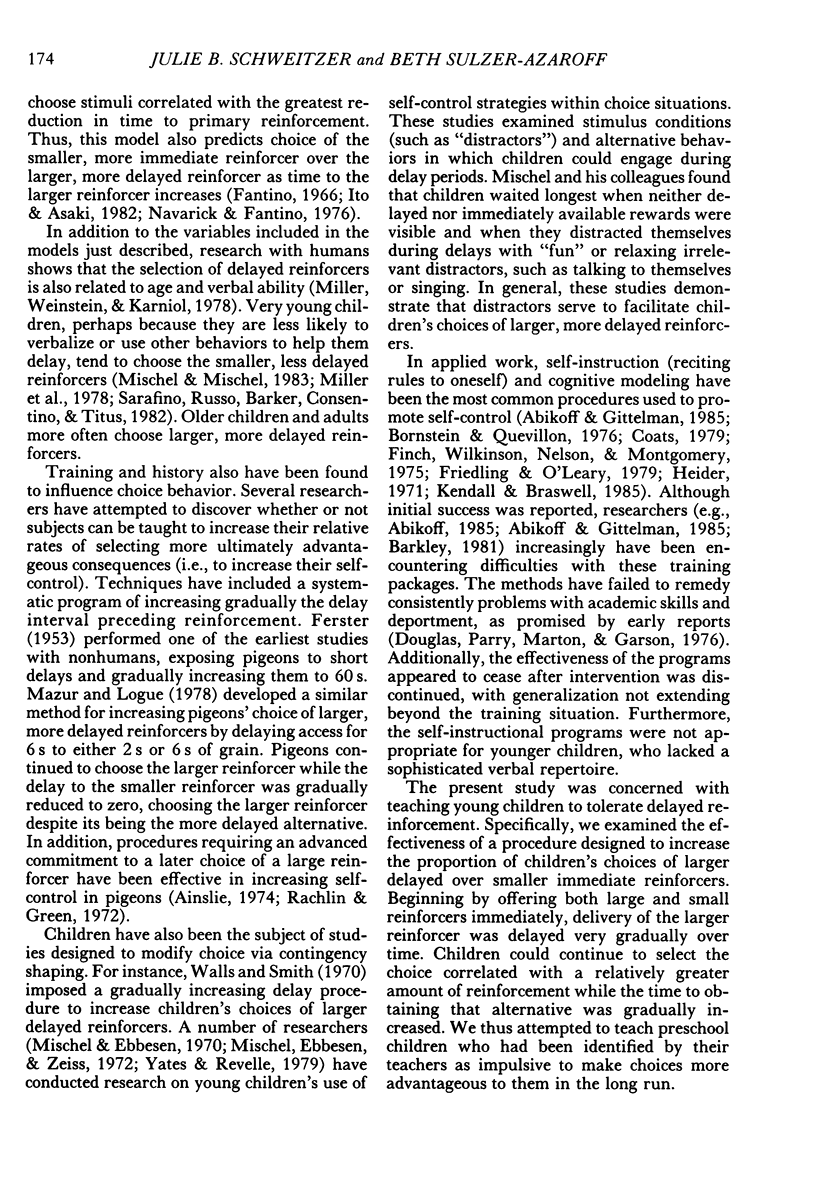
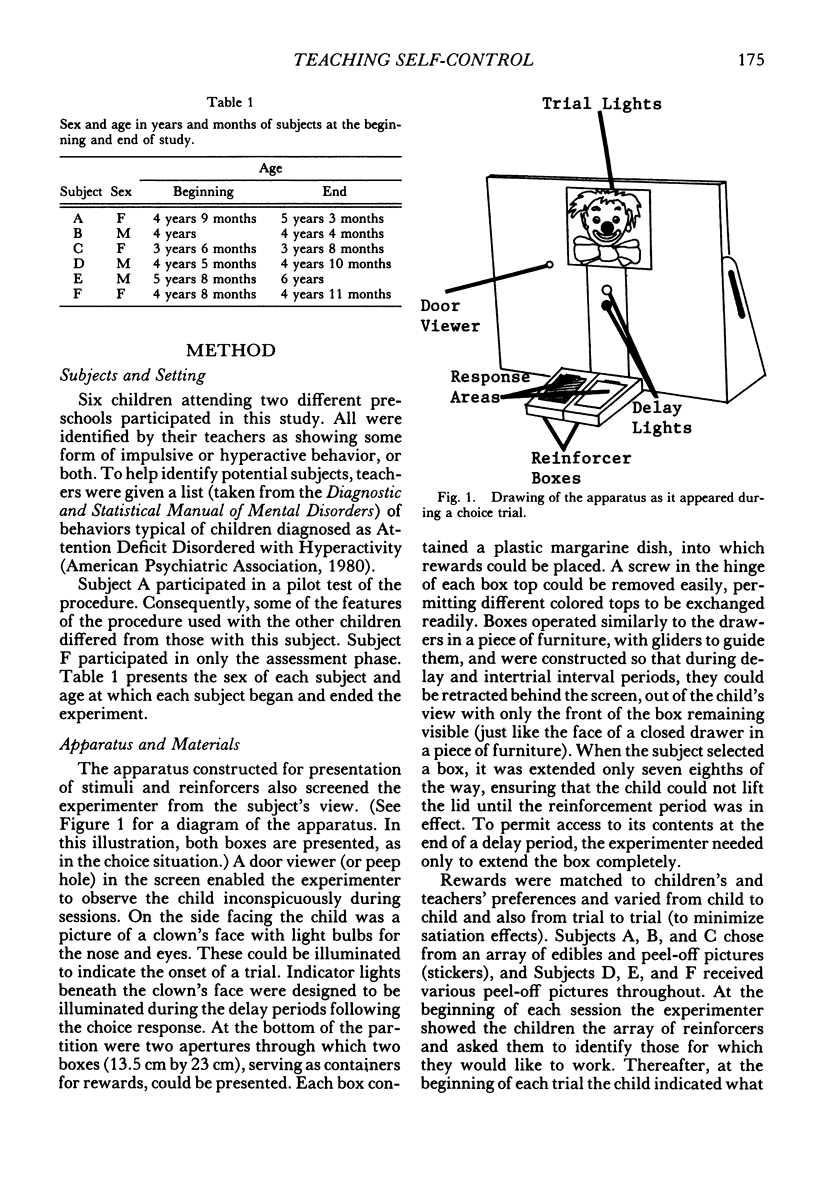
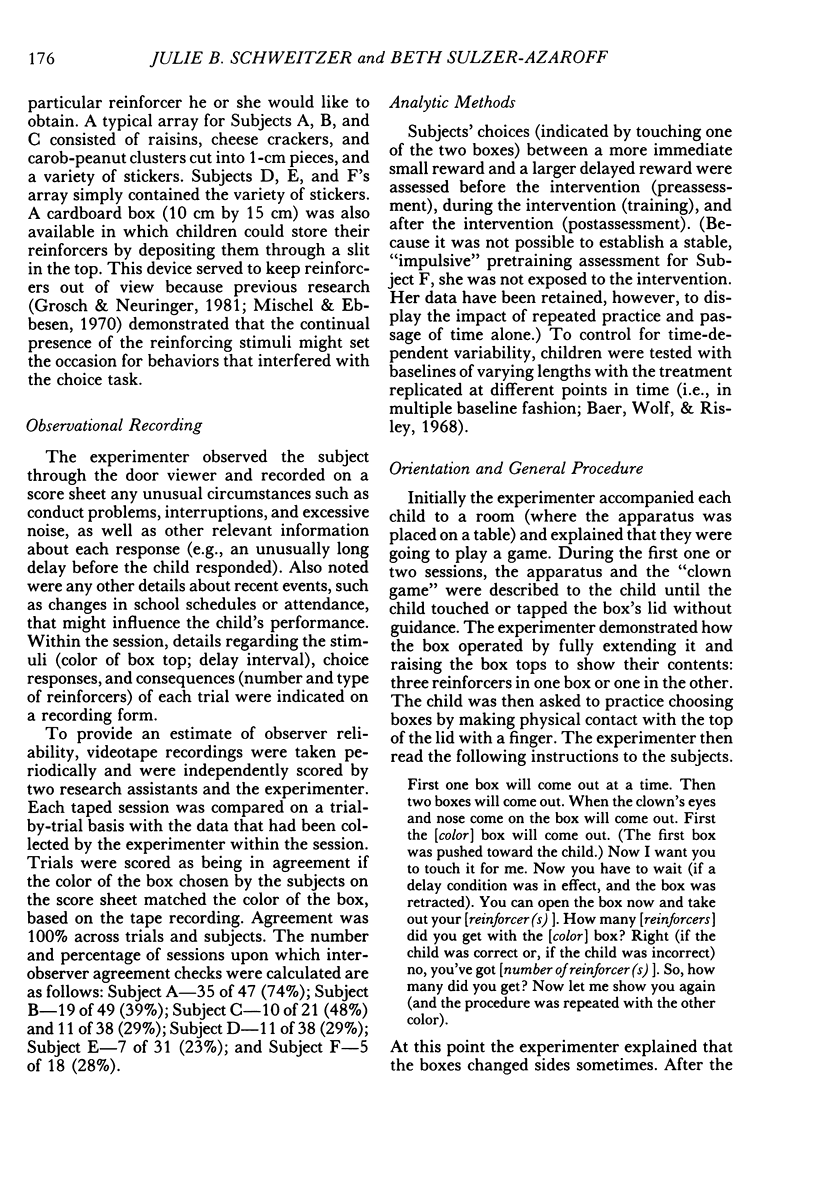
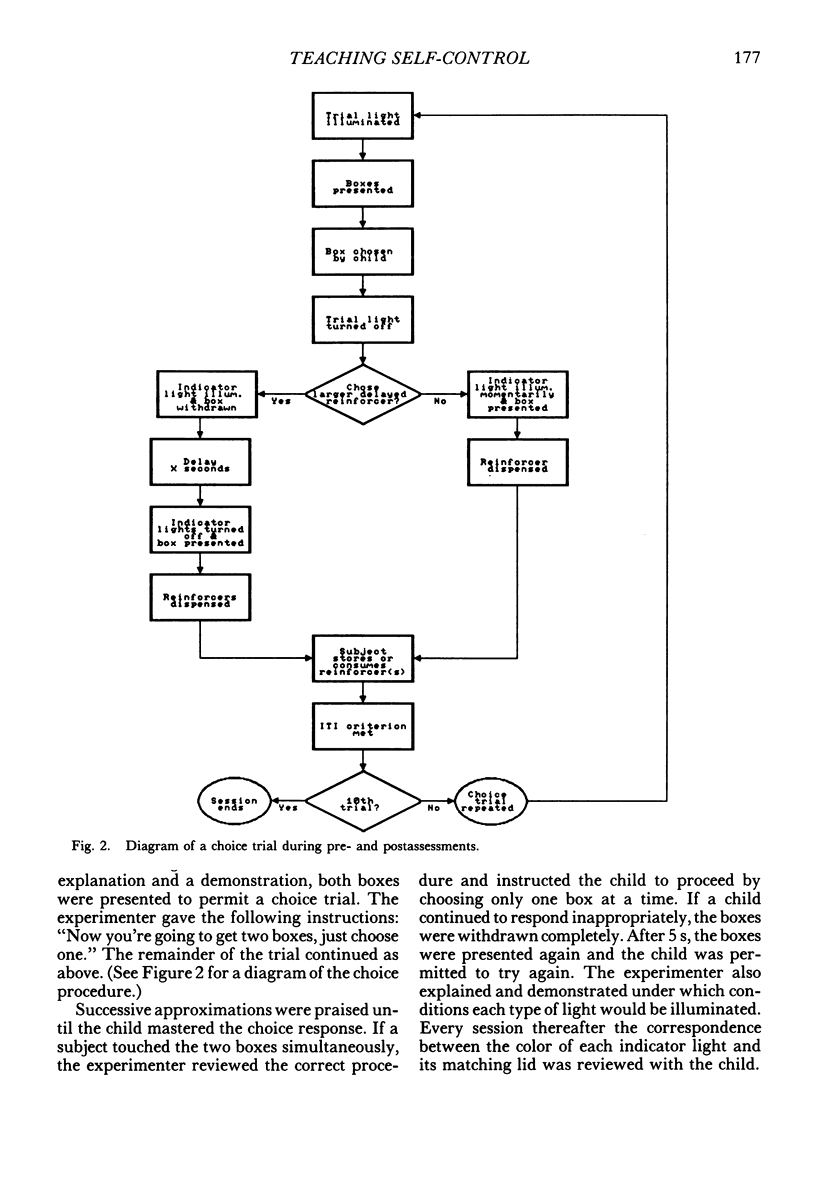
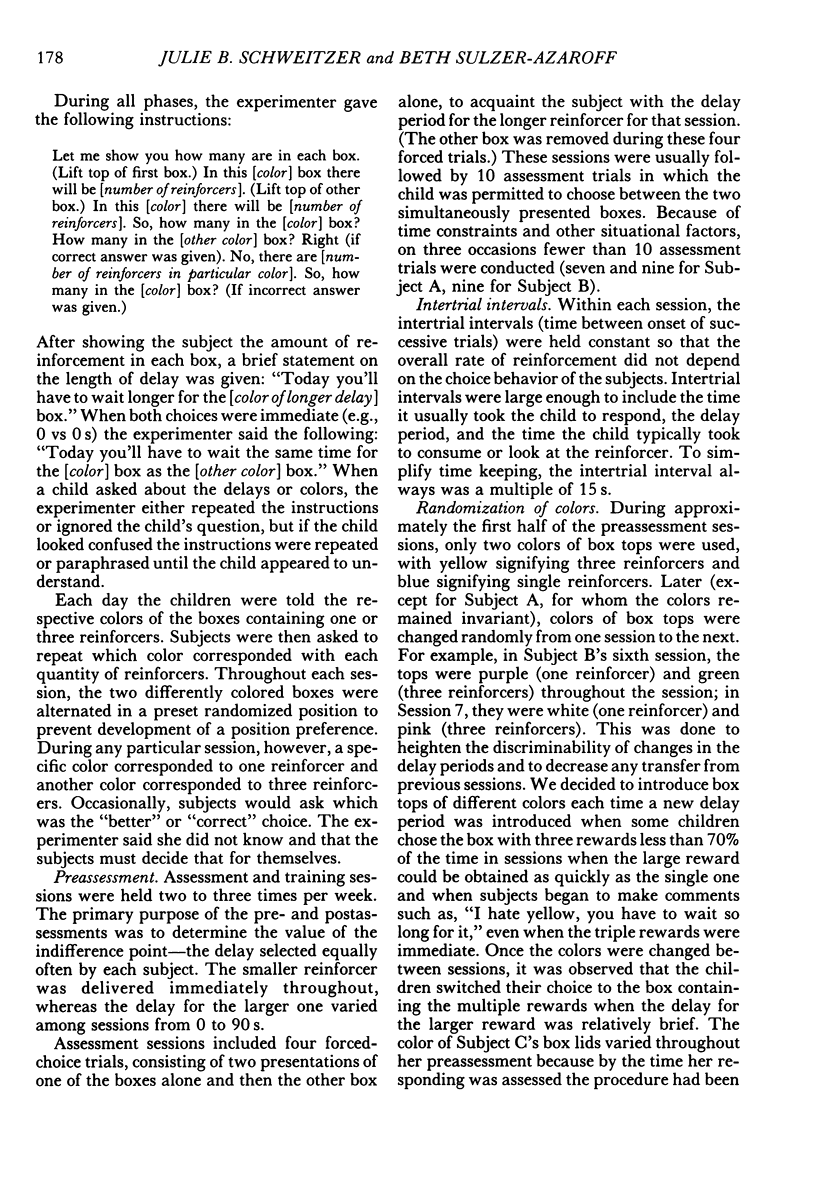
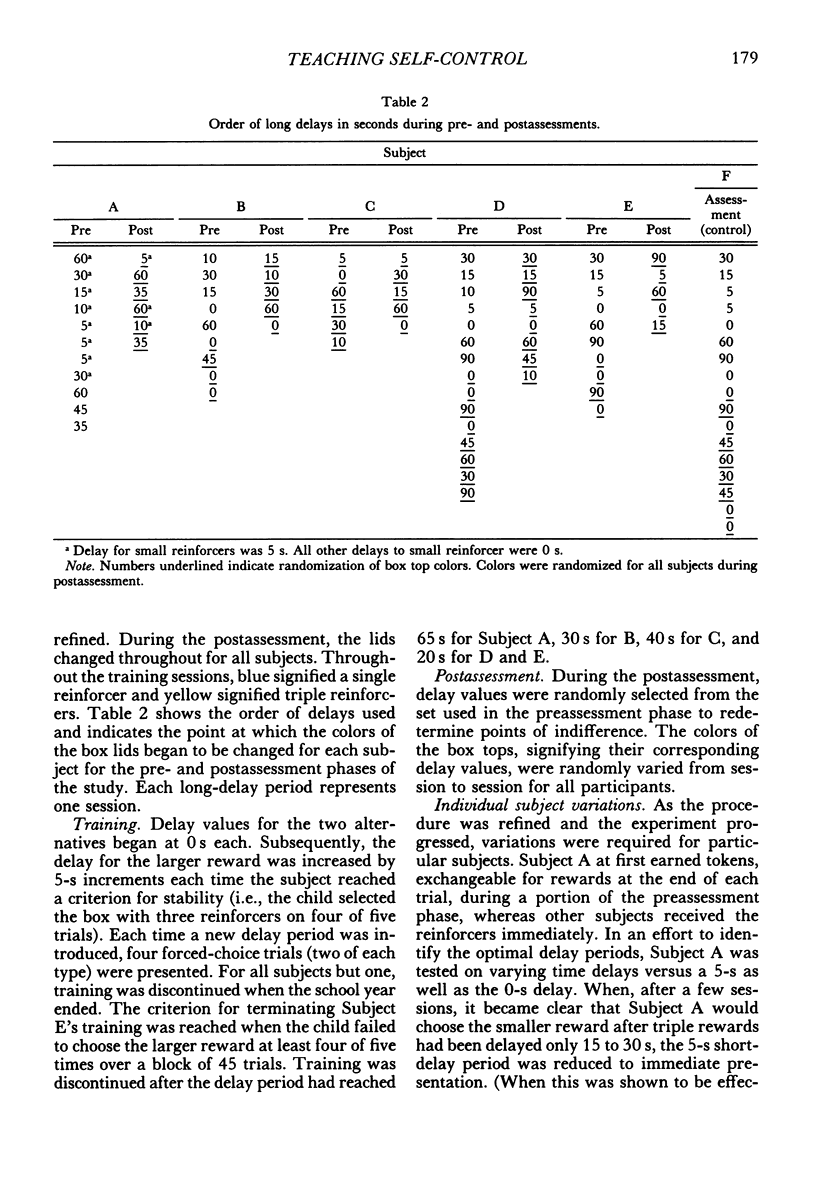
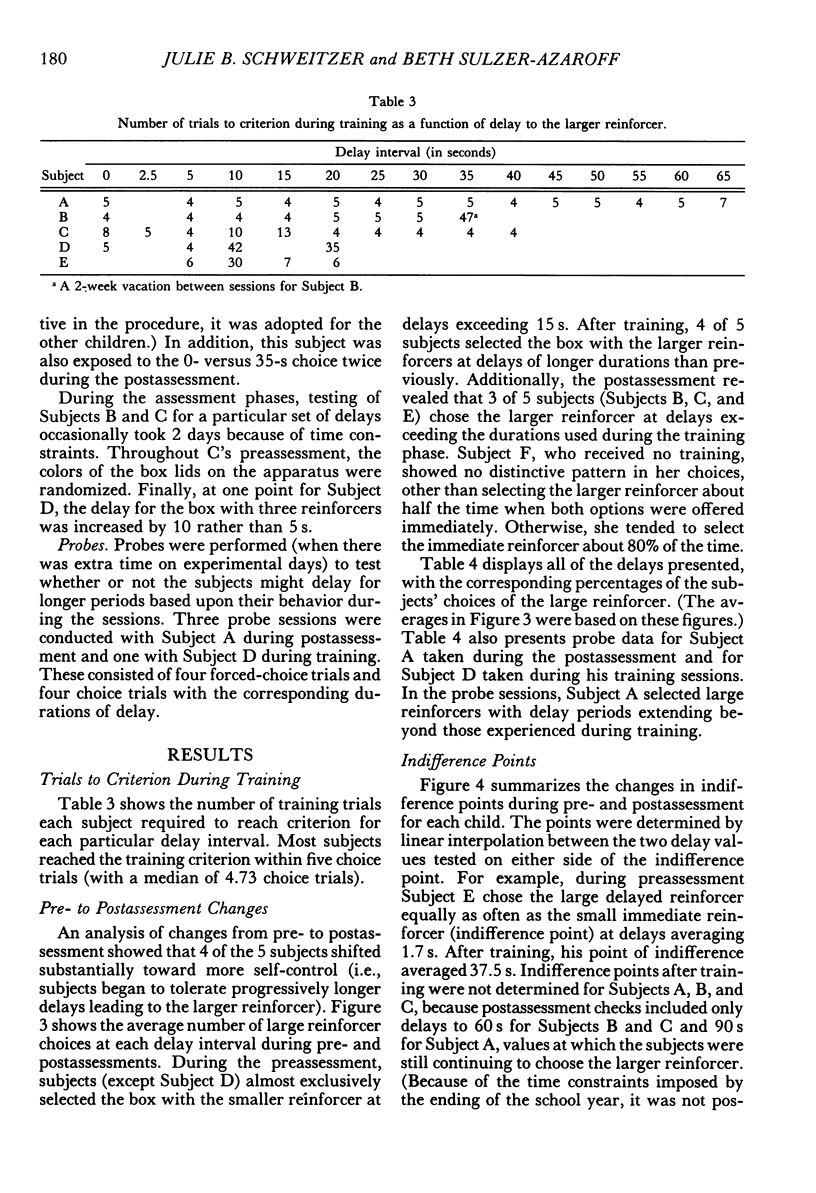
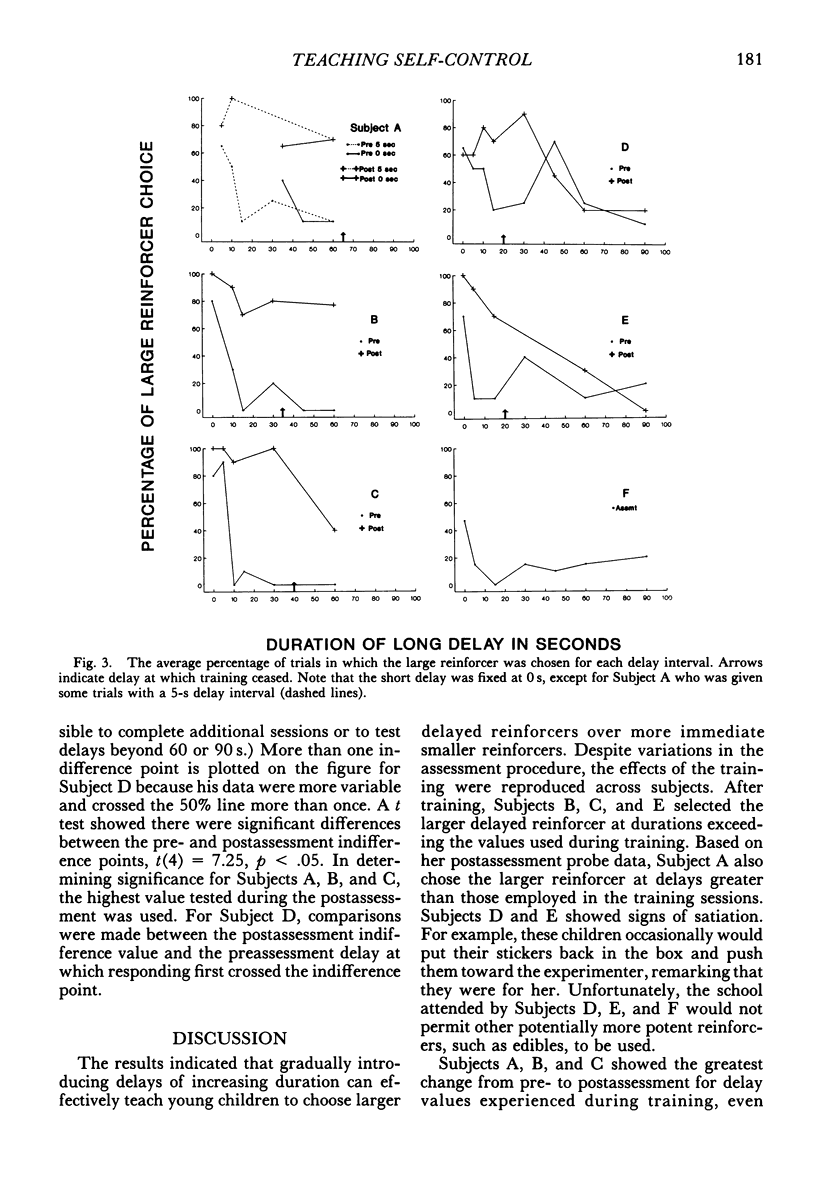
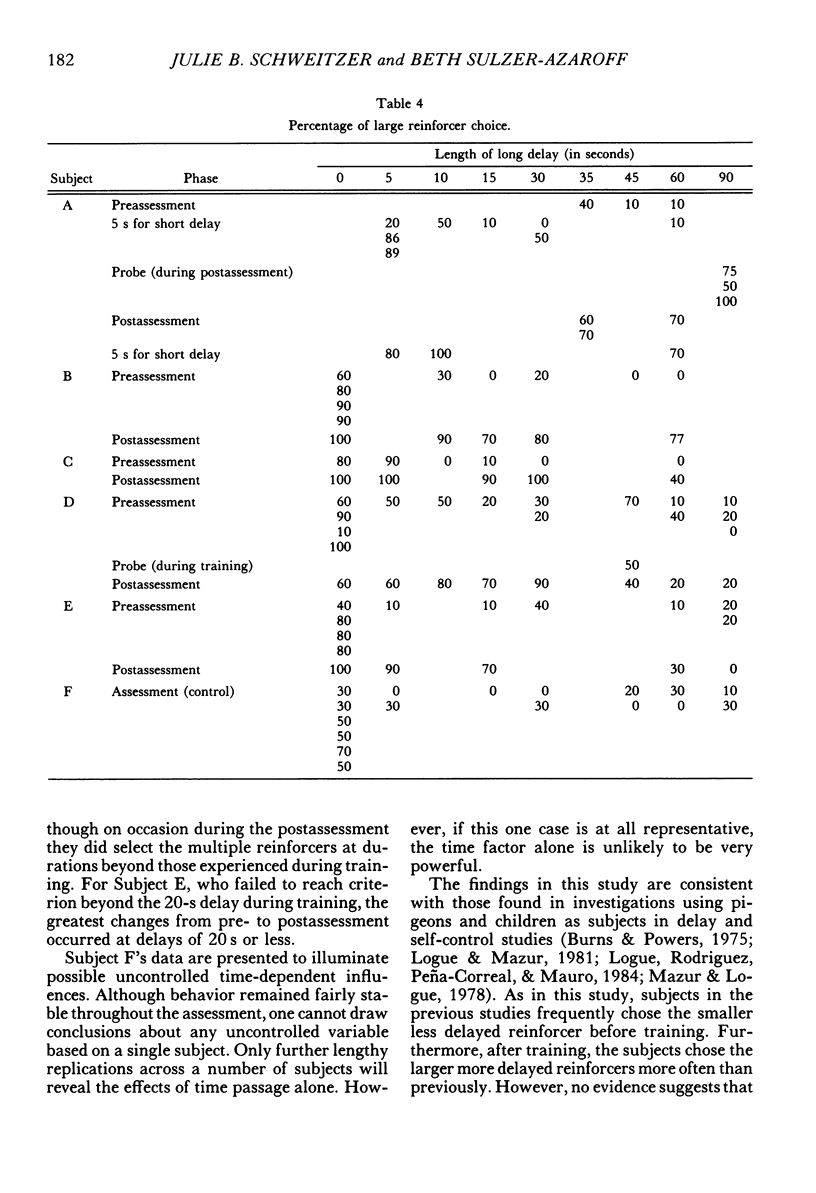
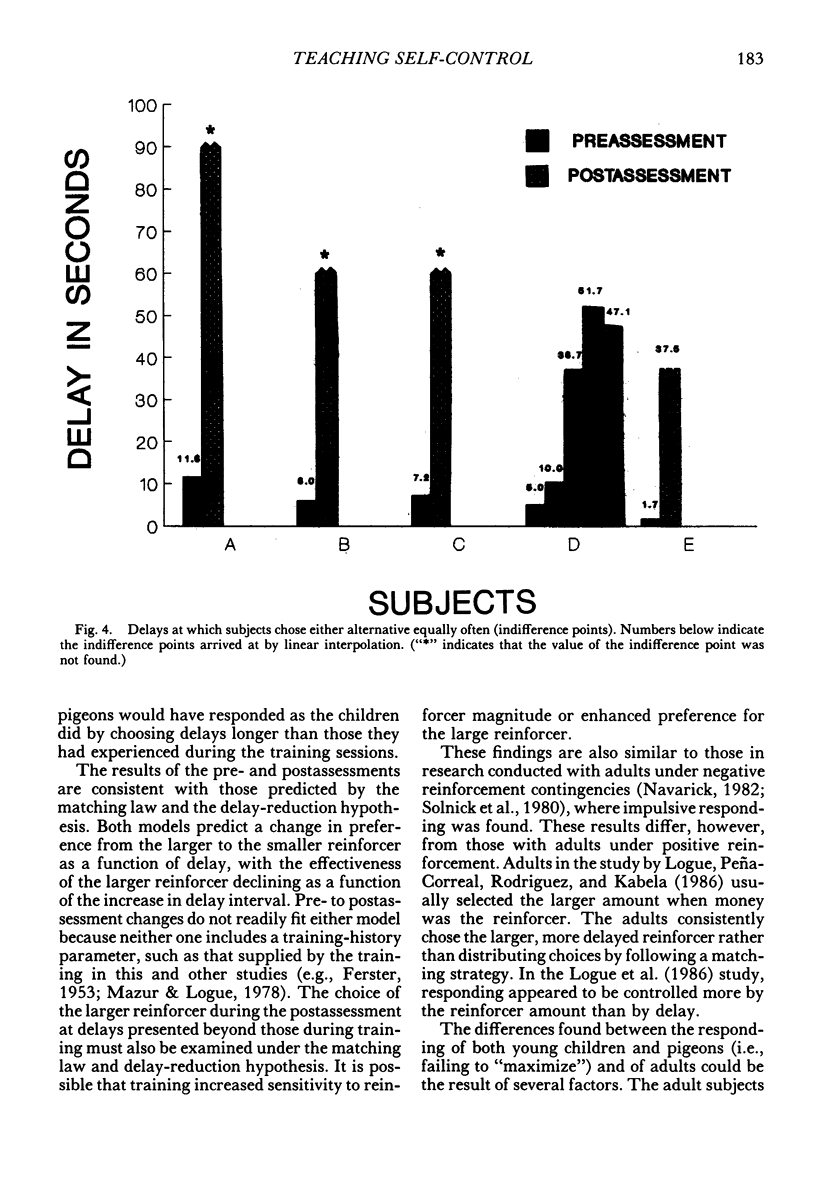
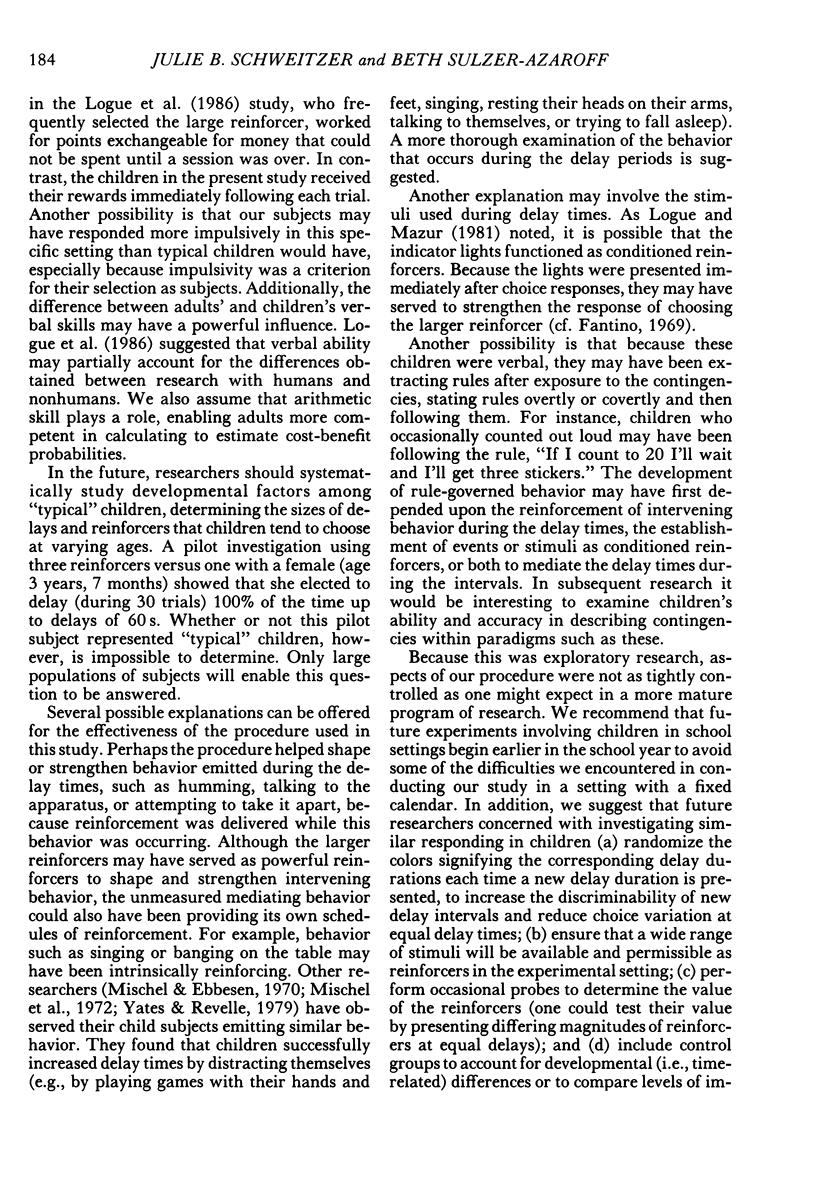
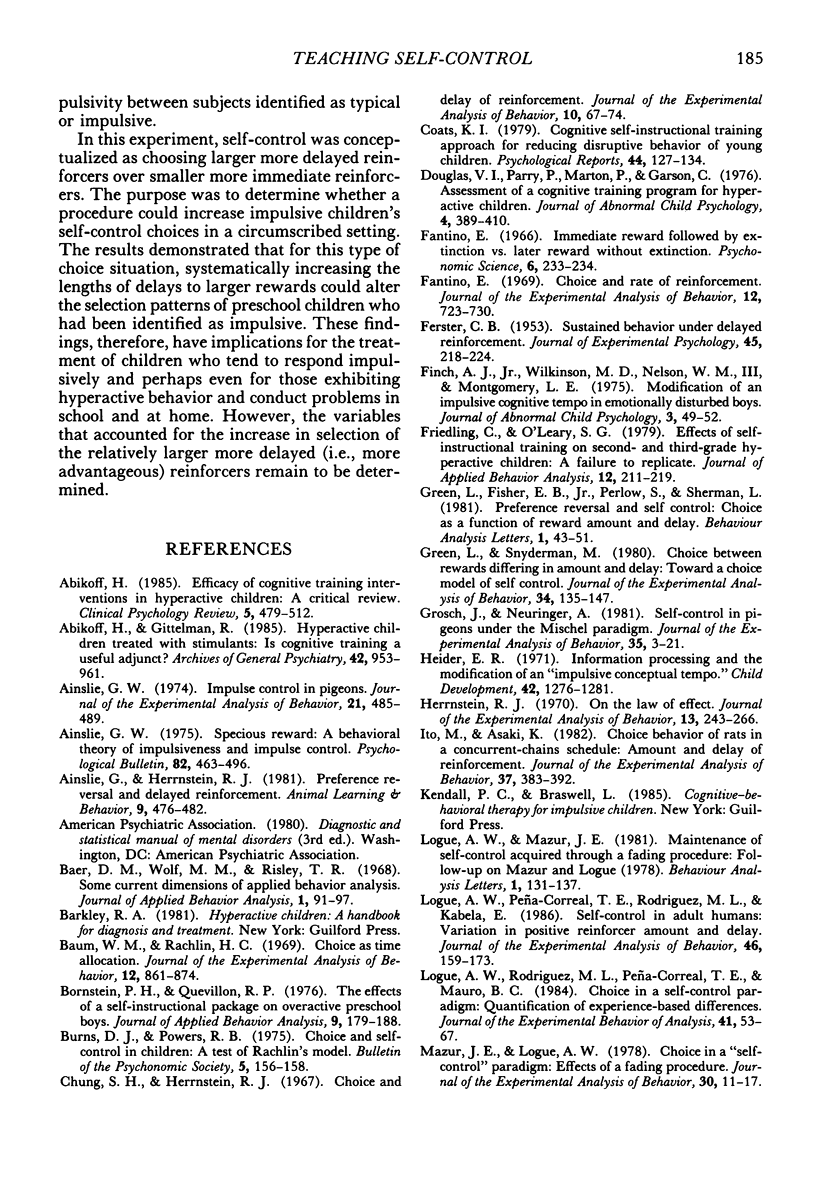
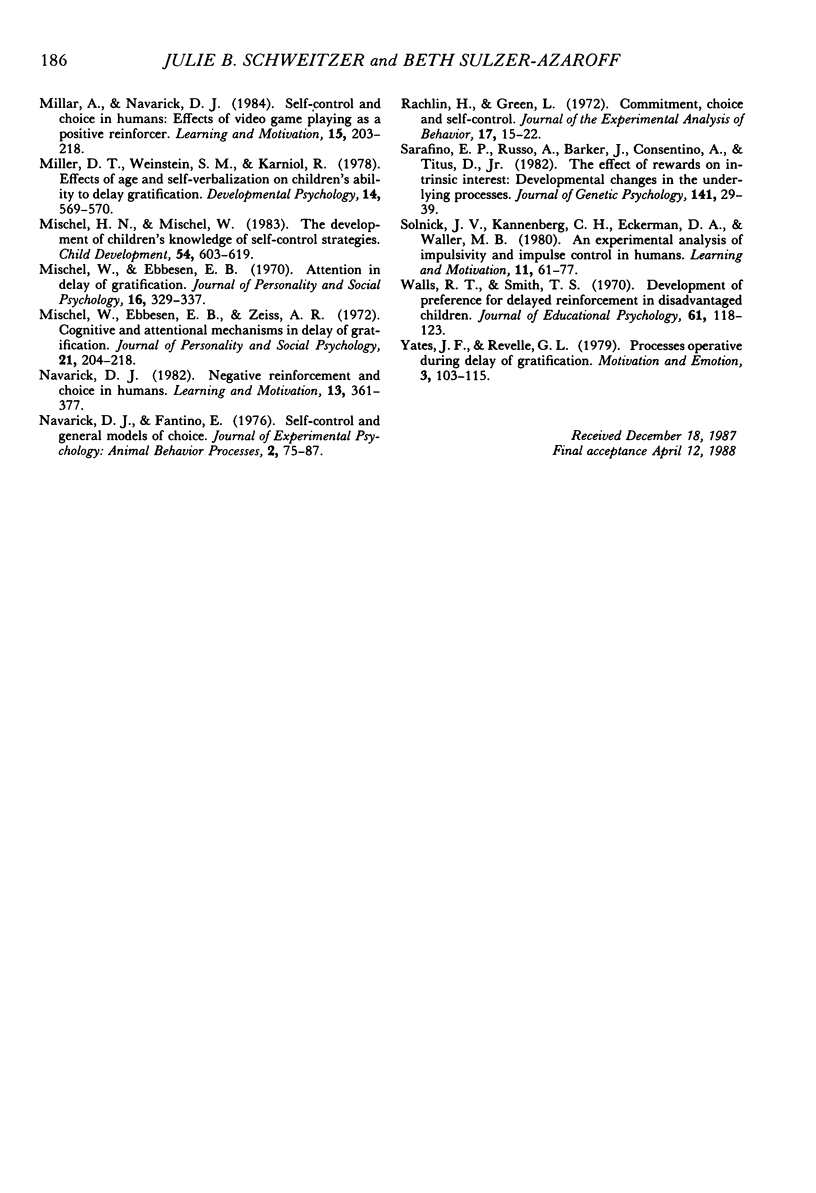
Selected References
These references are in PubMed. This may not be the complete list of references from this article.
- Abikoff H., Gittelman R. Hyperactive children treated with stimulants. Is cognitive training a useful adjunct? Arch Gen Psychiatry. 1985 Oct;42(10):953–961. doi: 10.1001/archpsyc.1985.01790330033004. [DOI] [PubMed] [Google Scholar]
- Ainslie G. W. Impulse control in pigeons. J Exp Anal Behav. 1974 May;21(3):485–489. doi: 10.1901/jeab.1974.21-485. [DOI] [PMC free article] [PubMed] [Google Scholar]
- Ainslie G. Specious reward: a behavioral theory of impulsiveness and impulse control. Psychol Bull. 1975 Jul;82(4):463–496. doi: 10.1037/h0076860. [DOI] [PubMed] [Google Scholar]
- Baer D. M., Wolf M. M., Risley T. R. Some current dimensions of applied behavior analysis. J Appl Behav Anal. 1968 Spring;1(1):91–97. doi: 10.1901/jaba.1968.1-91. [DOI] [PMC free article] [PubMed] [Google Scholar]
- Baum W. M., Rachlin H. C. Choice as time allocation. J Exp Anal Behav. 1969 Nov;12(6):861–874. doi: 10.1901/jeab.1969.12-861. [DOI] [PMC free article] [PubMed] [Google Scholar]
- Bornstein P. H., Quevillon R. P. The effects of a self-instructional package on overactive preschool boys. J Appl Behav Anal. 1976 Summer;9(2):179–188. doi: 10.1901/jaba.1976.9-179. [DOI] [PMC free article] [PubMed] [Google Scholar]
- Chung S. H., Herrnstein R. J. Choice and delay of reinforcement. J Exp Anal Behav. 1967 Jan;10(1):67–74. doi: 10.1901/jeab.1967.10-67. [DOI] [PMC free article] [PubMed] [Google Scholar]
- Coats K. I. Cognitive self-instructional training approach for reducing disruptive behavior of young children. Psychol Rep. 1979 Feb;44(1):127–134. doi: 10.2466/pr0.1979.44.1.127. [DOI] [PubMed] [Google Scholar]
- Douglas V. I., Parry P., Marton P., Garson C. Assessment of a cognitive training program for hyperactive children. J Abnorm Child Psychol. 1976;4(4):389–410. doi: 10.1007/BF00922535. [DOI] [PubMed] [Google Scholar]
- FERSTER C. B. Sustained behavior under delayed reinforcement. J Exp Psychol. 1953 Apr;45(4):218–224. doi: 10.1037/h0062158. [DOI] [PubMed] [Google Scholar]
- Fantino E. Choice and rate of reinforcement. J Exp Anal Behav. 1969 Sep;12(5):723–730. doi: 10.1901/jeab.1969.12-723. [DOI] [PMC free article] [PubMed] [Google Scholar]
- Finch A. J., Jr, Wilkinson M. D., Nelson W. M., 3rd, Montgomery L. E. Modification of an impulsive cognitive tempo in emotionally disturbed boys. J Abnorm Child Psychol. 1975;3(1):49–52. doi: 10.1007/BF00916030. [DOI] [PubMed] [Google Scholar]
- Friedling C., O'Leary S. G. Effects of self-instructional training on second- and third-grade hyperactive children: a failure to replicate. J Appl Behav Anal. 1979 Summer;12(2):211–219. doi: 10.1901/jaba.1979.12-211. [DOI] [PMC free article] [PubMed] [Google Scholar]
- Green L., Snyderman M. Choice between rewards differing in amount and delay: Toward a choice model of self control. J Exp Anal Behav. 1980 Sep;34(2):135–147. doi: 10.1901/jeab.1980.34-135. [DOI] [PMC free article] [PubMed] [Google Scholar]
- Grosch J., Neuringer A. Self-control in pigeons under the Mischel paradigm. J Exp Anal Behav. 1981 Jan;35(1):3–21. doi: 10.1901/jeab.1981.35-3. [DOI] [PMC free article] [PubMed] [Google Scholar]
- Heider E. R. Information processing and the modification of an "impulsive conceptual tempo". Child Dev. 1971 Oct;42(4):1276–1281. [PubMed] [Google Scholar]
- Herrnstein R. J. On the law of effect. J Exp Anal Behav. 1970 Mar;13(2):243–266. doi: 10.1901/jeab.1970.13-243. [DOI] [PMC free article] [PubMed] [Google Scholar]
- Ito M., Asaki K. Choice behavior of rats in a concurrent-chains schedule: Amount and delay of reinforcement. J Exp Anal Behav. 1982 May;37(3):383–392. doi: 10.1901/jeab.1982.37-383. [DOI] [PMC free article] [PubMed] [Google Scholar]
- Logue A. W., Peña-Correal T. E., Rodriguez M. L., Kabela E. Self-control in adult humans: variation in positive reinforcer amount and delay. J Exp Anal Behav. 1986 Sep;46(2):159–173. doi: 10.1901/jeab.1986.46-159. [DOI] [PMC free article] [PubMed] [Google Scholar]
- Logue A. W., Rodriguez M. L., Peña-Correal T. E., Mauro B. C. Choice in a self-control paradigm: Quantification of experience-based differences. J Exp Anal Behav. 1984 Jan;41(1):53–67. doi: 10.1901/jeab.1984.41-53. [DOI] [PMC free article] [PubMed] [Google Scholar]
- Mazur J. E., Logue A. W. Choice in a "self-control" paradigm: effects of a fading procedure. J Exp Anal Behav. 1978 Jul;30(1):11–17. doi: 10.1901/jeab.1978.30-11. [DOI] [PMC free article] [PubMed] [Google Scholar]
- Mischel W., Ebbesen E. B., Zeiss A. R. Cognitive and attentional mechanisms in delay of gratification. J Pers Soc Psychol. 1972 Feb;21(2):204–218. doi: 10.1037/h0032198. [DOI] [PubMed] [Google Scholar]
- Rachlin H., Green L. Commitment, choice and self-control. J Exp Anal Behav. 1972 Jan;17(1):15–22. doi: 10.1901/jeab.1972.17-15. [DOI] [PMC free article] [PubMed] [Google Scholar]
- Walls R. T., Smith T. S. Development of preference for delayed reinforcement in disadvantaged children. J Educ Psychol. 1970 Apr;61(2):118–123. doi: 10.1037/h0028878. [DOI] [PubMed] [Google Scholar]


